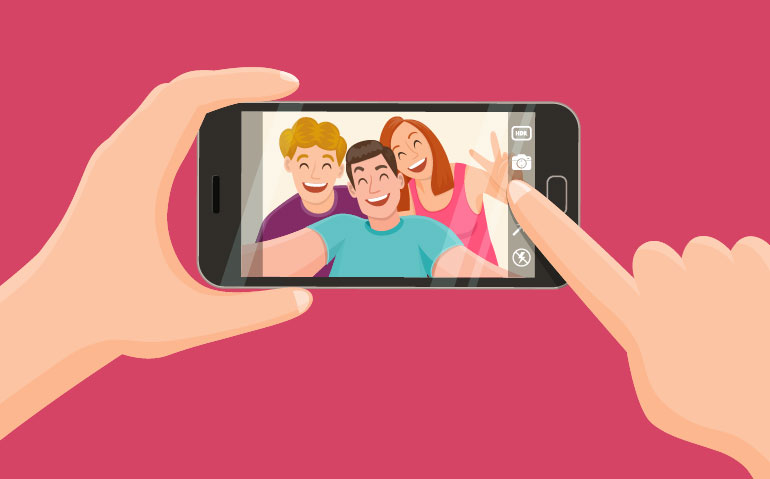Technology in the dental industry: bringing dentist-patient interactions to new levels

Technology in the dental industry is not only improving the success of complex procedures and the results of cosmetic dentistry; it is also making it easier for dentists and patients to interact remotely. With demand for this type of technology rising significantly due to the pandemic, it’s an exciting time for the industry. Amanda Napitu, COO of Dentaly.org, shares some of the innovation changing how we look after our teeth.
It’s National Selfie Day as if you needed an excuse! But as you see photos of yourself and others plastered all over social media, doesn’t it make you more aware of how your teeth look?
That’s probably not a bad thing, since many of us are guilty of neglecting our teeth and only visiting the dentist when we think there’s something wrong.
But the pressure piled on by celebrities and influencers with pearly white, perfectly straight teeth can lead to unrealistic expectations for the average person. Plus, it shifts the focus more to the cosmetic appearance – which is not necessarily tied to dental health. Crooked, off-white teeth can actually be very healthy, but we are being conditioned to believe otherwise.
The rise in video calling over the past year, spending hours looking at our faces next to our friends, family and colleagues, has only served to fan the flames of self-consciousness, too.
Fortunately, technology is being used in new ways to help us care for our smiles, not just to make us more aware of how we look to others.
Here are some examples of how technological innovation in the dentistry industry bridges the gap between patients and dentists and enables more remote interactions.
Teledentistry
It might make sense for a doctor to inspect a skin condition or diagnose symptoms via video call, but can this type of interaction really work for a dental examination?
Well, yes and no. Most dental complaints where a patient is in pain will still require an in-person visit to treat the root cause. Fillings, root canals and extractions cannot be performed remotely. However, an online consultation can save hours of pain in an urgent situation and direct the patient straight to the treatment or medication they need for immediate relief.
Teledentistry software connects patients with a dentist, either via video chat or via messaging, so they can get advice about a dental concern or simply ask for information on a cosmetic treatment. These platforms can also be used to store medical records, x-rays and so on for future reference.
Although the COVID-19 pandemic has driven many dentists onto these platforms, it seems highly likely that adoption will continue, even after things begin to return to normal.
Dental monitoring apps
Some companies are developing special wireless dental scopes, known as intraoral cameras. Equipped with a high-resolution camera and bright LED lighting, these devices let patients take clear, high-quality photos of individual teeth.
While a smartphone photo can only capture limited angles inside a patient’s mouth, these scopes are small enough to move around the mouth and capture every aspect of each tooth.
Dentists can use these images to assess problem teeth, identify early tooth decay, and look for signs of gum disease. Patients may still need to attend for in-office treatment, but dental scopes essentially enable a detailed remote checkup.
The benefits are numerous: increased convenience for patients, efficiencies for dental practices, and a way for phobic patients to check-in without actually having to sit in a dentist’s chair. These devices can also be invaluable for patients with limited mobility, for whom a dental checkup can be quite an ordeal. And we may see them being used to providing better care for patients in care homes, where access to proper dental care is often a challenge.
The downside of owning a personal dental scope is the cost. At upwards of £100, not everybody can afford to own one of these devices – even if it may save them money on dental appointments in the long term.
One alternative is to use a free dental monitoring app like Teeth4Life. This combines a simple self-monitoring system with educational videos to help people brush their teeth properly, assess plaque levels, and check for gum disease and oral cancer symptoms.
Teleorthodontics
Many companies these days let you straighten your teeth from home with clear aligners, but not all are equal. Some rely on a dentist looking at a photo of your mouth, whereas others use advanced technology like Dental Monitoring to measure tooth movement since your last check in.
Based on an initial 3D scan of the patient’s teeth, a patented algorithm is able to track individual tooth movement to the nearest 0.1mm precisely.
The results are analysed and presented to the dentist via a dashboard. Alerts notify the dentist if there are any anomalies or areas for concern. Dentists can also follow up on patients who are not checking in according to their treatment schedule.
READ MORE:
- Biometric authentication: the good, the bad and the ugly
- You’ve had a breach – how do you successfully roll out an emergency patch?
- How to successfully reopen your office in a post-Covid-19 world
- Common migration pitfalls and how to avoid them
While some dental professionals are, understandably, sceptical of orthodontia being performed remotely, it certainly is becoming far more widespread and effective thanks to these technological developments.
As all of this technology continues to develop in the coming years, hopefully, we will see costs reduced so that more people can access affordable dental care.
For more news from Top Business Tech, don’t forget to subscribe to our daily bulletin!
